
Alexandre Cabanel was a French painter. He painted historical, classical and religious subjects in the academic style. He was also well known as a portrait painter. He was Napoleon III's preferred painter and, with Gérôme and Meissonier, was one of "the three most successful artists of the Second Empire."

Anne-Louis Girodet de Roussy-Trioson, also known as Anne-Louis Girodet-Trioson or simply Girodet, was a French painter and pupil of Jacques-Louis David, who participated in the early Romantic movement by including elements of eroticism in his paintings. Girodet is remembered for his precise and clear style and for his paintings of members of the Napoleonic family.
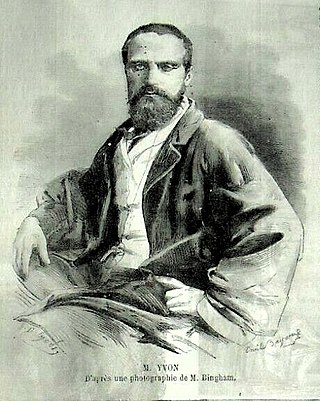
Adolphe Yvon was a French painter known for his paintings of the Napoleonic Wars. Yvon studied under Paul Delaroche, rose to fame during the Second Empire, then finished his career as a teacher.

Jean-Louis-Ernest Meissonier was a French academic painter and sculptor. He became famous for his depictions of Napoleon and his military sieges and manoeuvres in paintings acclaimed both for the artist's mastery of fine detail and his assiduous craftsmanship. The English art critic John Ruskin examined his work at length under a magnifying glass, "marvelling at Meissonier's manual dexterity and eye for fascinating minutiae." Meissonier enjoyed great success in his lifetime, becoming, with Gérôme and Cabanel, one of "the three most successful artists of the Second Empire."

Franz Xaver Winterhalter was a German painter and lithographer, known for his flattering portraits of royalty and upper-class society in the mid-19th century. His name has become associated with fashionable court portraiture. Among his best known works are Empress Eugénie Surrounded by her Ladies in Waiting (1855) and the portraits he made of Empress Elisabeth of Austria (1865).

Henri Gervex was a French painter who studied painting under Alexandre Cabanel, Pierre-Nicolas Brisset, and Eugène Fromentin.
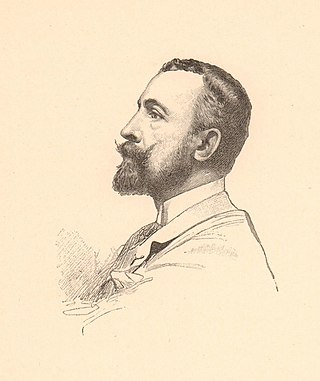
Théobald Chartran was a French academic painter and portrait artist.
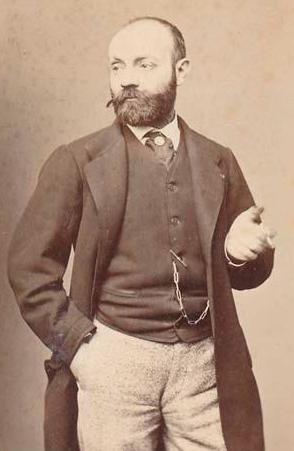
Gustave Clarence Rodolphe Boulanger was a French figurative painter and academic artist and teacher known for his Classical and Orientalist subjects.
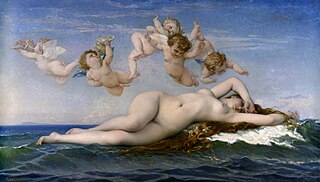
The Birth of Venus is a painting by the French artist Alexandre Cabanel. It was painted in 1863, and is now in the Musée d'Orsay in Paris. A second and smaller version from ca. 1864 is in Dahesh Museum of Art. A third version dates from 1875; it is in the Metropolitan Museum of Art in New York City.

The Imperial Crown of Mexico was the crown created for the Sovereign of Mexico on two separate occasions in the 19th century. The first was created upon the Declaration of Independence of the Mexican Empire from the kingdom of Spain in 1821, for the First Mexican Empire. The second crown was created upon the decree of the Assembly of Notables in 1863 for the Second Mexican Empire.

Napoleon Crossing the Alps is a series of five oil on canvas equestrian portraits of Napoleon Bonaparte painted by the French artist Jacques-Louis David between 1801 and 1805. Initially commissioned by the King of Spain, the composition shows a strongly idealized view of the real crossing that Napoleon and his army made along the Alps through the Great St Bernard Pass in May 1800.
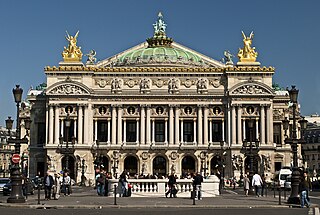
Second Empire style, also known as the Napoleon III style, is a highly eclectic style of architecture and decorative arts originating in the Second French Empire. It was characterized by elements of many different historical styles, and also made innovative use of modern materials, such as iron frameworks and glass skylights. It flourished during the reign of Emperor Napoleon III (1852–1870) and had an important influence on architecture and decoration in the rest of Europe and North America. Major examples of the style include the Opéra Garnier (1862–1871) in Paris by Charles Garnier, the Institut National d'Histoire de l'Art, the Church of Saint Augustine (1860–1871), and the Philadelphia City Hall (1871–1901). The architectural style was closely connected with Haussmann's renovation of Paris carried out during the Second Empire; the new buildings, such as the Opéra, were intended as the focal points of the new boulevards.
Jean Alexandre Michel André Castaigne was a French artist and engraver, a student of Jean-Léon Gérôme and Alexandre Cabanel. Subsequently he became a leading illustrator in the United States. He is often recalled as the original illustrator of the first edition of The Phantom of the Opera.

Paul-Émile Boutigny was a French academist painter who specialized in military subjects.

Phaedra is a later work of Alexandre Cabanel, a French academic painter. This work was exhibited in the Salon of 1880 and later donated by Cabanel to the Musée Fabre, located in his hometown of Montpellier. Phaedra is a large oil painting of a classical subject in literature, which can be attributed to Cabanel's studies in the Paris École des Beaux-Arts. As Cabanel's painting career developed, he expanded his style to preserve the French Academy while appealing to his personal interests in literature, often depicting new perspectives in contradiction with tradition. Alexandre Cabanel's painting of Phaedra exemplifies his pull toward academic paintings of theatrical heroines in reference to the social happenings of late nineteenth-century France.

Jacqueline Comerre, née Paton was a French painter and sculptor, and the wife of the painter Léon-François Comerre (1850-1916).
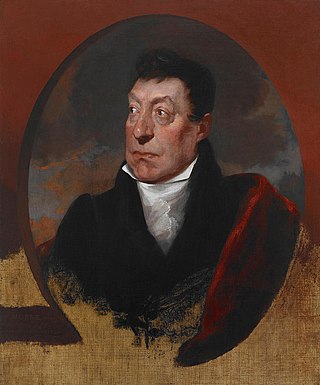
Marquis de Lafayette is an oil on canvas painting by Samuel Morse, from 1825. Mostly known for his invention of the telegraph, Morse was also an artist and a professor of painting and sculpture at the University of the City of New York.
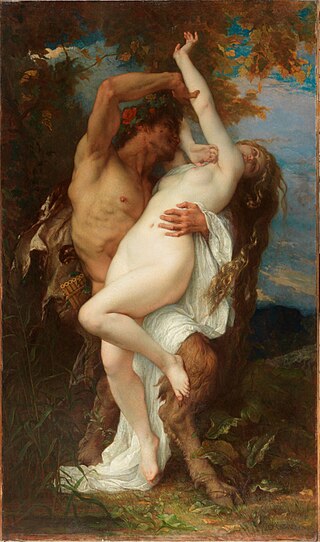
Nymph and Satyr is an oil on canvas painting by French painter Alexandre Cabanel, made in 1860. It is owned by the Musée d'Orsay, in Paris, but it is on loan in the Palais des Beaux-Arts de Lille.
Portrait of Napoleon III may refer to:

The Salon of 1810 was an art exhibition held at the Louvre in Paris, part of the series of Salons held to display paintings, sculptures and engravings. It opened on 5 November 1810 and lasted until April 1811. It was the penultimate Salon to be held during the Napoleonic era and was followed by the Salon of 1812.


















